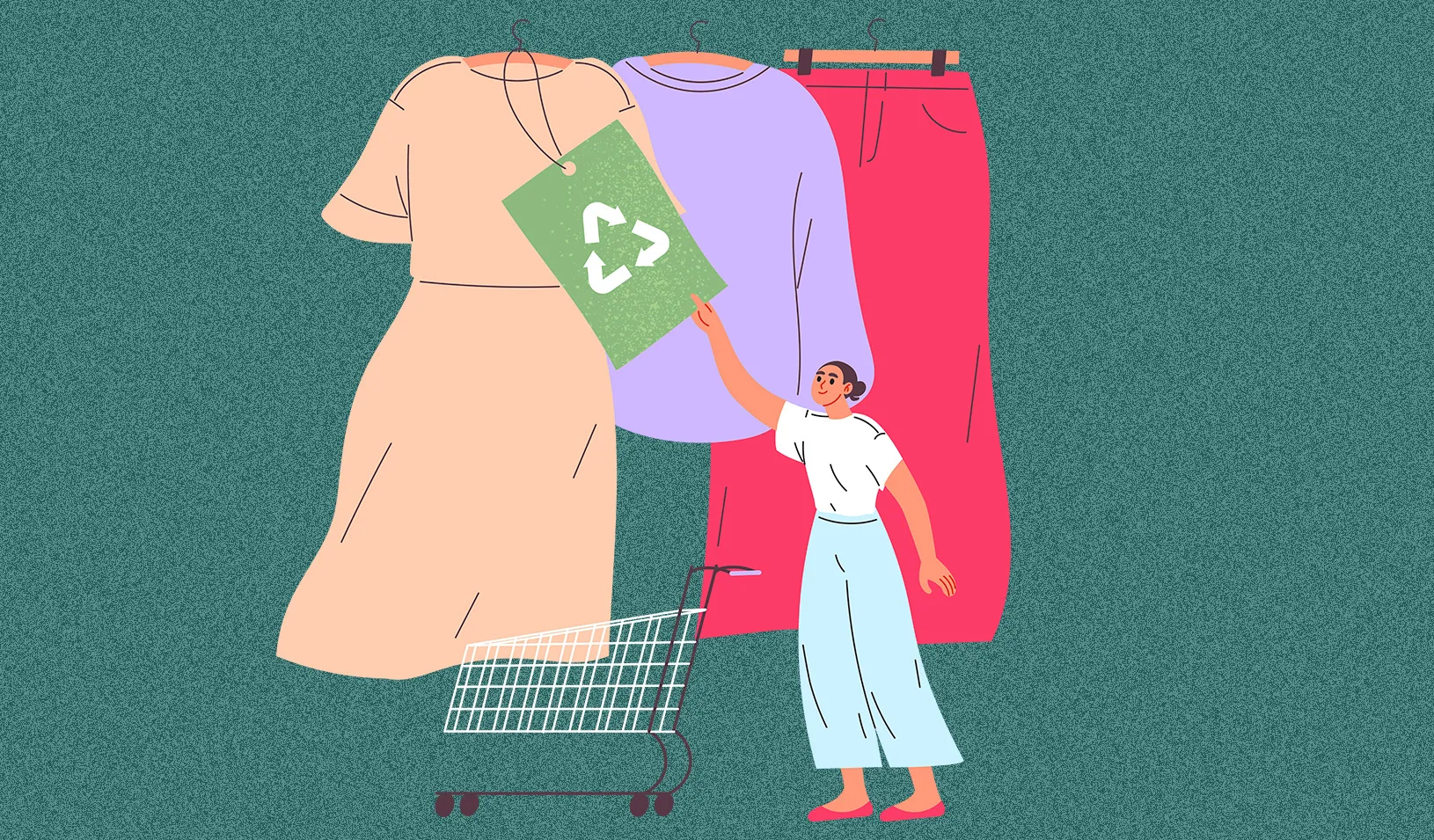
Textile recycling and buying secondhand can keep fabric waste and used clothes out of landfills. | iStock/undrey
A bit of retail therapy can feel like harmless fun. Yet getting a great deal on a new shirt or pair of shoes may come with a hidden price tag: greenhouse gas emissions, resource depletion, and the mistreatment of workers and animals. The average cotton T-shirt, for example, requires about 700 gallons of water to make. A fast-fashion polyester top is made from petroleum, sheds microfibers, and may spend decades decomposing in a landfill.
And the apparel industry’s footprint has been expanding. Global fiber production has more than doubled since 2000, and consumers are buying more clothes as fast-fashion brands churn out inexpensive looks. To mitigate the environmental and social issues associated with the apparel industry, companies and consumers alike must shift toward sustainability, says Barchi Gillai, the associate director of the Value Chain Innovation Initiative (VCII) at Stanford Graduate School of Business. “It’s a responsibility that all of us share,” she says.
In a new white paper, Gillai and her colleagues examine the production processes behind three essential everyday materials: polyester, cotton, and leather. Coauthored by Hau Lee, VCII’s faculty codirector and a professor emeritus of operations, information, and technology; Jessica Landzberg, MBA ’23; and Nina Sabharwal, MBA ’23, the paper explores each material’s unique impacts and details potential solutions.
Polyester is a durable, lightweight material composed of fibers made from polyethylene terephthalate (PET), which is derived from fossil fuels. The production of polyester and other synthetic fibers requires large amounts of energy, accounting for about 1.35% of global oil consumption. This results in greenhouse gas emissions that contribute to global warming. Possible solutions to these problems include switching to renewable energy and substituting virgin polyester with alternative materials such as biosynthetics and fibers that utilize carbon dioxide waste.
The cotton supply chain starts on a farm instead of a factory, but it also has a unique set of environmental impacts. Cotton cultivation often involves a variety of pesticides that can cause serious health issues in farm workers and contaminate freshwater systems, soil, and animal habitats. Cotton also consumes large amounts of water. To address these issues, cotton growers can implement non-chemical methods of pest control such as crop rotation and conserve water through drip irrigation.
Leather production has also grown over the past three decades. One of the primary concerns surrounding leather goods is animal cruelty. To ensure ethical sourcing of raw hides, brands can utilize certification programs that verify the humane treatment of farm animals. However, acquiring raw materials is only the first step in leather production. Transforming these raw hides into wearable fabrics requires several chemical-heavy processes, many of them relying on toxic materials. Moreover, 30%-45% of the toxic chromium used in the tanning process is not absorbed in the leather, and can potentially contaminate the environment when it is discarded. Finally, as much as 75% of the leather that enters the production process of leather goods does not end up in the finished product. Rather, these scraps and leftovers will likely be sent to landfills or incinerated.
Slowing down fast fashion
A garment’s impact continues even after it has been sold. Used garments often wind up in landfills or incinerators, wasting potentially valuable and non-renewable resources, and releasing greenhouse gases as they decay. The paper offers a range of strategies that clothing brands can adopt to increase the lifespans of garments and improve their reusability and recyclability. For instance, high-quality garments with timeless designs may be enjoyed for many years. Switching to single-material composition can make fabrics easier to recycle. And garments made from 100% natural materials are more suitable for composting.
Unfortunately, some of the available solutions that address a problem in one part of a product’s life cycle might lead to unwanted consequences later on. For example, while producing polyester from recycled PET uses less oil, fabrics made from these materials tend to release more microfibers into the environment. “We’ve seen quite a few of those solutions that are helpful in one respect, but also have some drawbacks to them,” Gillai says. “It’s therefore important to figure out the total environmental impact of any solution we consider implementing.” The paper recommends that manufacturers use life-cycle assessments to help them choose solutions that offer the most positive impact throughout a garment’s lifespan.
While some companies have taken steps in the right direction, the apparel industry as a whole is showing no signs of becoming more sustainable. This is largely due to the popularity of “fast fashion”: low-quality garments with frequently-changing designs that are mass produced for little cost and viewed by consumers as almost disposable. The rise of fast fashion has fueled a surge in garment production, leading to an increase in textile waste.
The paper encourages companies to find new ways to generate revenue without producing more garments. One option is to start garment collection or buyback programs in conjunction with opening secondhand stores where consumers can purchase pre-owned items at a discount. “Slowing down the rate of production doesn’t have to come at the expense of profitability,” Gillai says.
Gillai also highlights the importance of textile-to-textile recycling. “Such closed-loop, garment-to-garment recycling solutions not only keep textile waste out of landfills, but also reduce the amount of resources that we use to make clothes, as well as the pollution associated with these production processes.”
While much of the paper describes how companies can practice sustainability, it ends with a discussion of the important role played by consumers. “To achieve meaningful results it is crucial for consumers to take a part in this effort,” Gillai says. “Try to donate items that are still wearable. Consider buying secondhand clothes. And think of renting items needed for a special occasion,” she advises. “If we embrace the need for change and if our shopping habits reflect this understanding, then we can help drive change in this industry.”